English Version
Hello dear community of travellers. On this occasion I invite you to take a virtual tour of a beautiful museum located in Havana, the National Museum of Fine Arts, in this case the Museum of Universal Art, located very close to the Central Park, it treasures a valuable and rich collection of works of outstanding foreign artists. I hope you like it.
This museum was founded in April 1913, and is divided into two parts, Universal Art and Cuban Art, located in different buildings. The Universal Art building is a construction dating from the beginning of the Republic, which was once the Asturian Centre and was inaugurated as a museum in 2001; it is characterised by its four-storey French eclectic style. The most important collection is that of European art representative of traditional European schools such as Spain, France, Great Britain, Holland, Flanders and Italy. In addition to the permanent exhibitions, there are temporary exhibitions and it is often the venue for other cultural activities. The exhibition rooms are equipped with modern lighting, air-conditioning and comprehensive security systems.

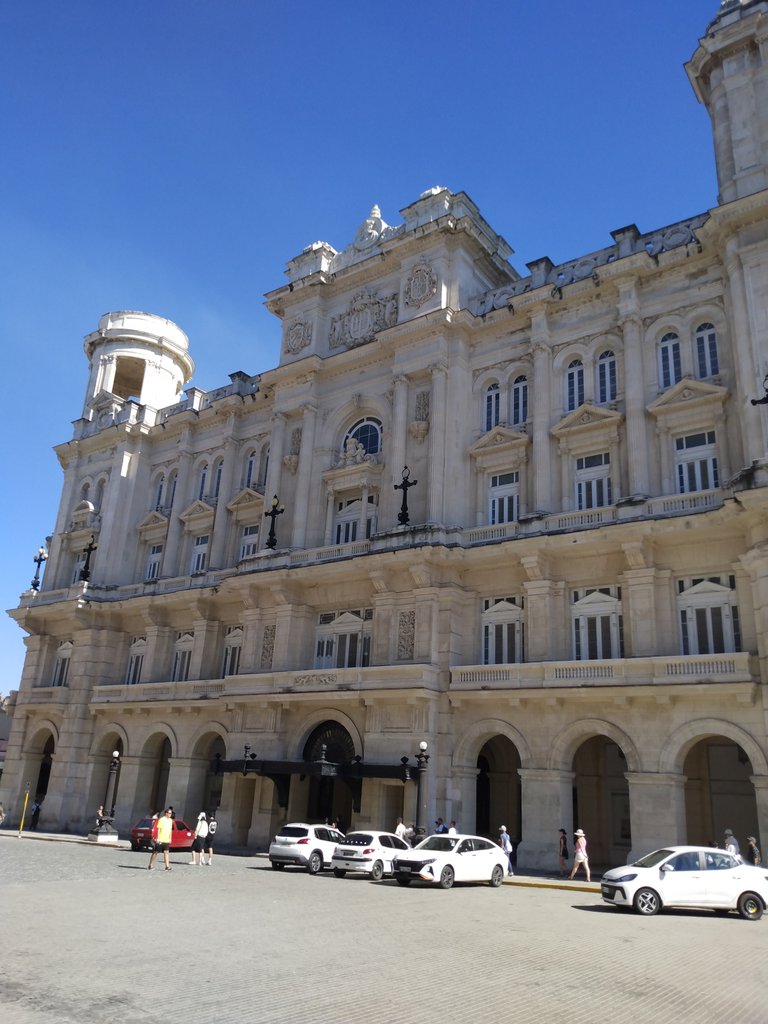
Just after climbing the first staircase leading to the first floor of the museum our eyes are dazzled by a colossal and impressive stained glass window on the roof of the building which depicts the three ships used by Admiral Christopher Columbus on his voyage of discovery.
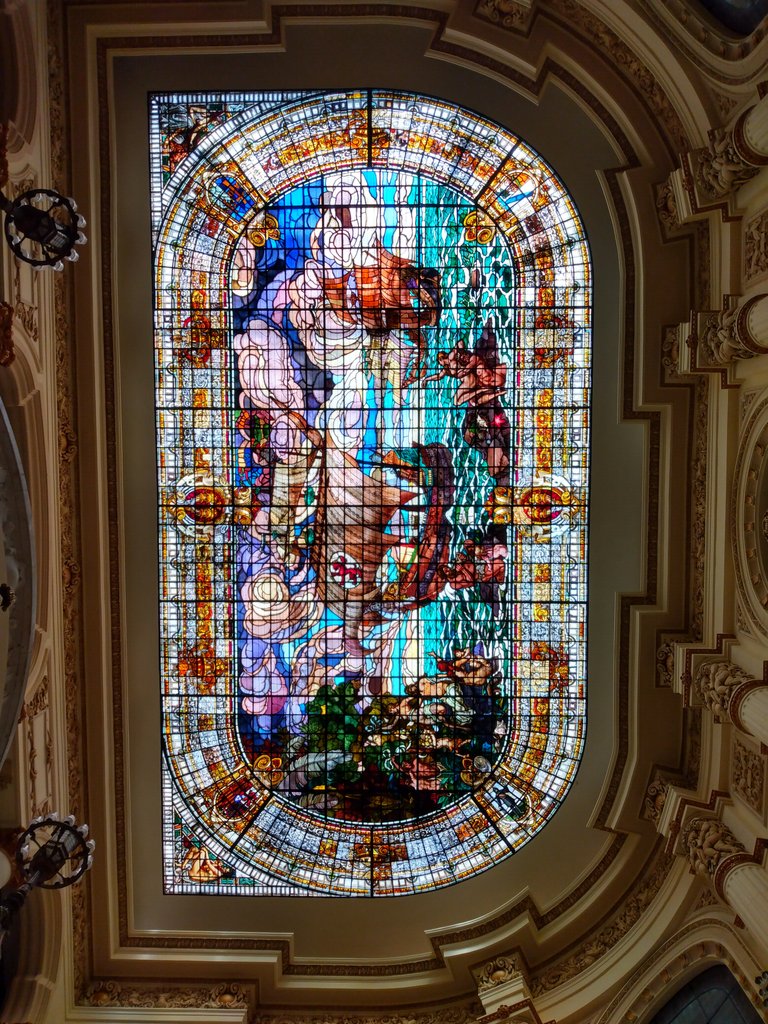
Views of the interior of the building showing the architectural styles that characterise its structural elements.
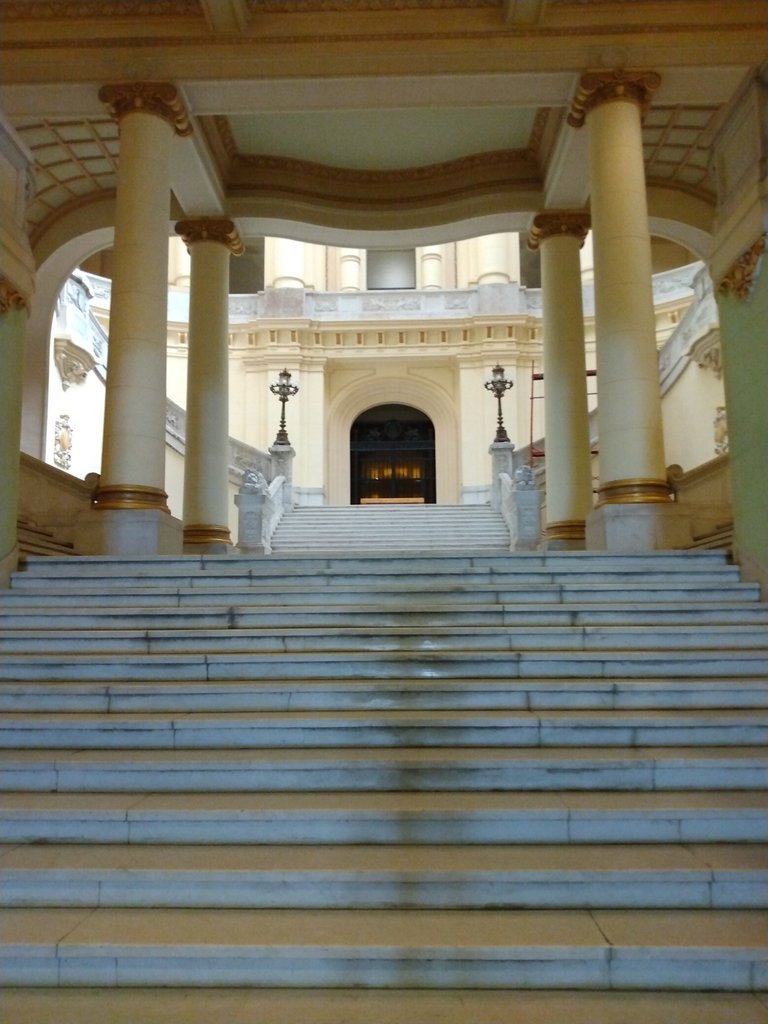
Staircase leading to the second floor.

View towards the entrance of the museum from the main staircase
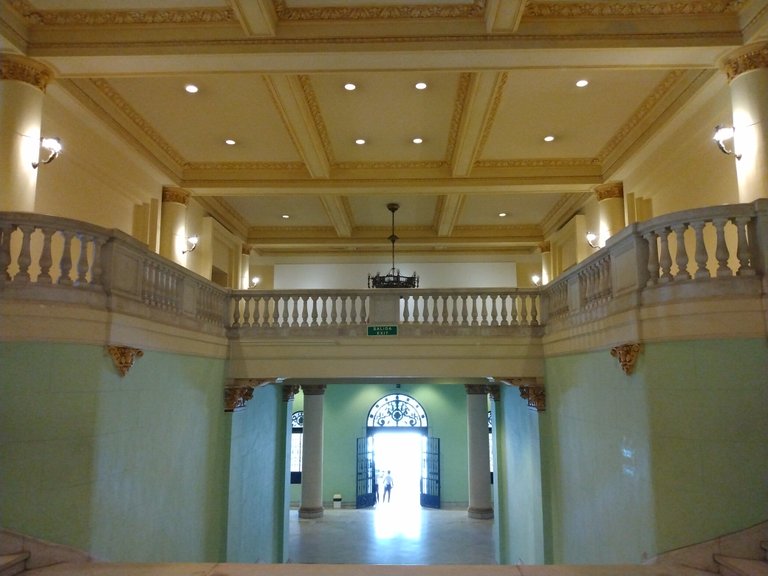
Second floor
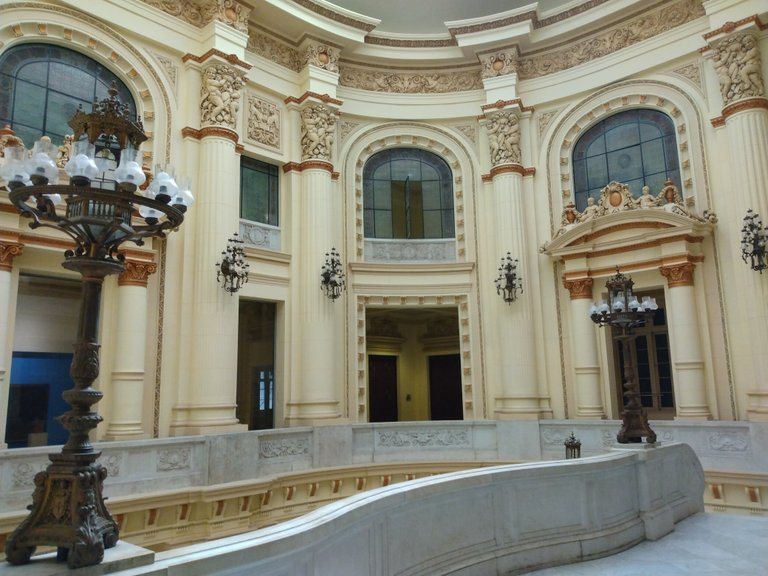
The exhibits are distributed by floors: on the second floor are the collections of Mexican Art and the North American School; on the second floor, Spanish Art; on the third floor, Greek, Egyptian, Roman and Sumerian Art; and on the top floor, representative works of the German School.
Mexican Art Hall
Most of the works belong to the seventeenth and nineteenth centuries have no authors while others are of internationally renowned authors in the Novo-Hispanic painting of the eighteenth and twentieth centuries. Different artistic genres are reflected such as: religious, portrait, Christology, hagiography, etc.
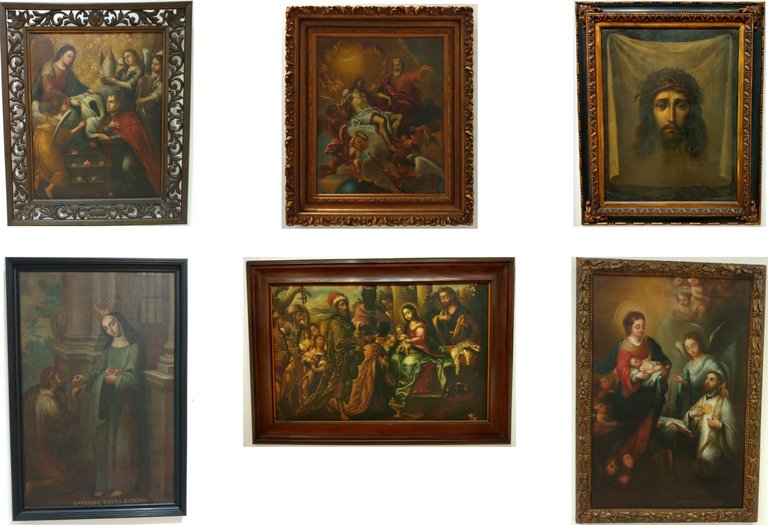
We find the portrait theme where we can appreciate the portrait of Magallanes and Francisca Xaviera de Paula, both of which are works by artists of the Novo-Hispanic School of the 18th century.

We can also see an exhibition of the paintings of one of the great exponents of Mexican art, the artist Jose Clemente Orozco.

North American Art
This room is located in front of the previously described and constitutes a unique collection in Cuba since it conserves a significant number of North American plastic arts of the XVIII and XIX centuries. We can find styles such as landscape, portrait, marine, costumbrismo, etc.
As soon as I entered this room I was struck by this painting of Niagara Falls in 1858, by the painter Regis Francois Gignoux. It is impressive how this artist managed to capture that moment that gives the idea that you are watching the falls in full motion through a portal.
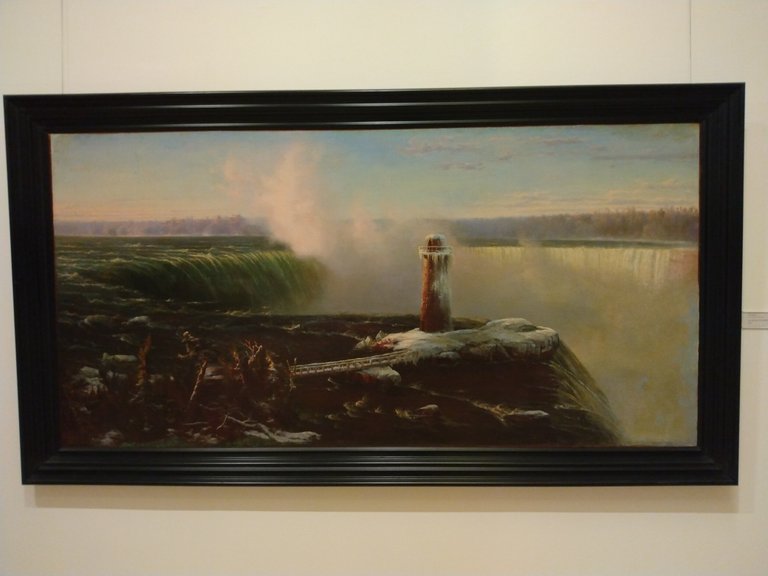
I must confess that I am not an art expert, but I have a knack for drawing and painting; and I especially love landscapes and seascapes. Here, I present you some works where the sea is reflected: the first one, entitled Marina, created by the American school of the XIX century and the second one entitled Low Tide by the artist Alfred Thomson Bricher. In the first one, the serenity that the sea can offer is captured while the second one reflects a diametrically opposite expression.
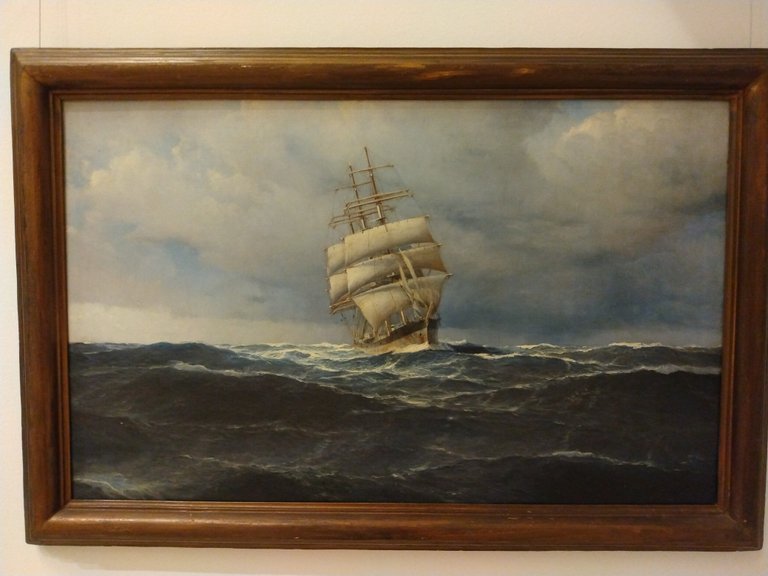

Examples of portraits, genre and religious paintings. Here is a portrait of George Washington.

Spanish Art Room
Since the end of the 19th century, many Spanish artists had been interested in visiting Cuba in order to exhibit their works. Consequently, Cuban collectors have always been perceptive of Spanish painting. As an expression of this, the museum treasures a valuable exhibition of Spanish works, with the collection of Joaquín Sorolla, one of the great exponents of Spanish art in the Impressionist style, standing out. He stands out for his marine and costumbrismo themes. Personally, I really like Sorolla's style of painting because of the way in which he knew how to deal with the themes through the use of loose brushstrokes and the mastery of colour.
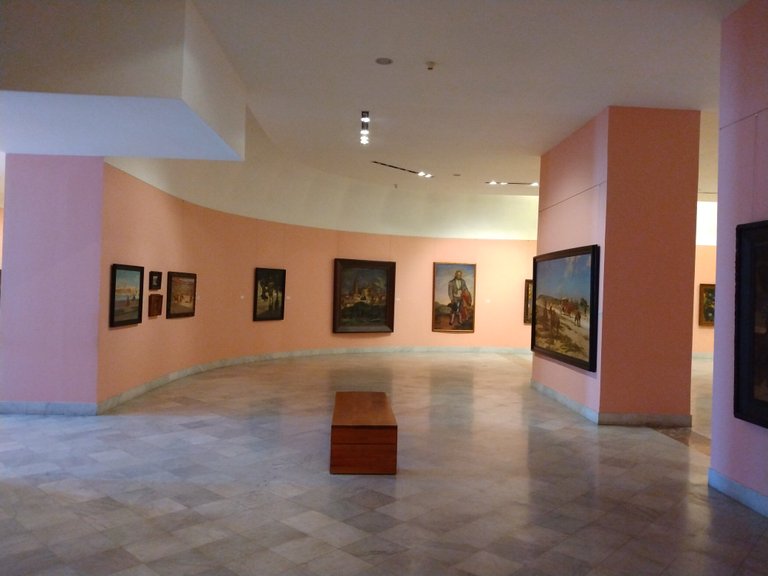
Collection of Joaquin Sorolla's works

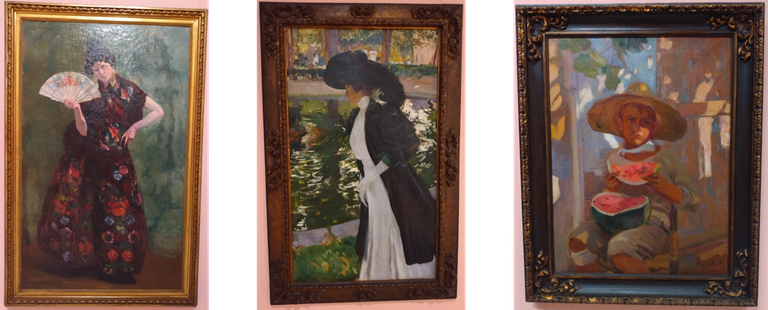
In another section of the room we can enjoy the works of other Spanish painters such as Hermenegildo Anglada, Jose Moreno Carbonero, Raimundo De Madrazo and others.

Antique Art room
It is located on the third floor of the museum and houses objects manufactured by the ancient Sumerian, Egyptian, Greek and Roman civilisations. Unfortunately, on the day I visited, the room was under restoration, but at least I was able to access a part of the collection representing Sumerian and Egyptian culture, where we found amphorae, cuneiform writing tablets and statuettes made of bronze, limestone, marble and other types of stone.
Here we have clay vessels from the Tell-El-Obeid culture dating from 3400 BC., cuneiform tablets made of clay and belonging to the Sumerian period in the I and III Dynasties of Ur. Around 2000 b.c.e. and figures and sculptures made of bronze, marble, limestone, etc. depicting Egyptian deities, priests and other cult elements.

Image of the Greek-Roman and Egyptian art room which is currently being restored.
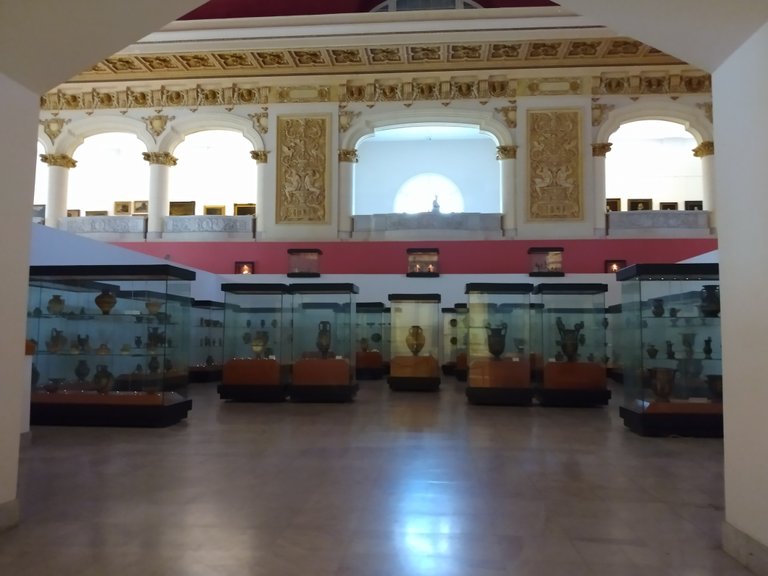
German Art Gallery
This room exhibits the main works of Germanic artists where we can appreciate beautiful paintings with varied themes such as religious, portrait and still life as well as an impressive collection of stained glass windows with bright colours that play with light. I was very struck by two paintings that reflect the event of the construction of the Tower of Babel mentioned in the ancient biblical texts.
Stained glass collection
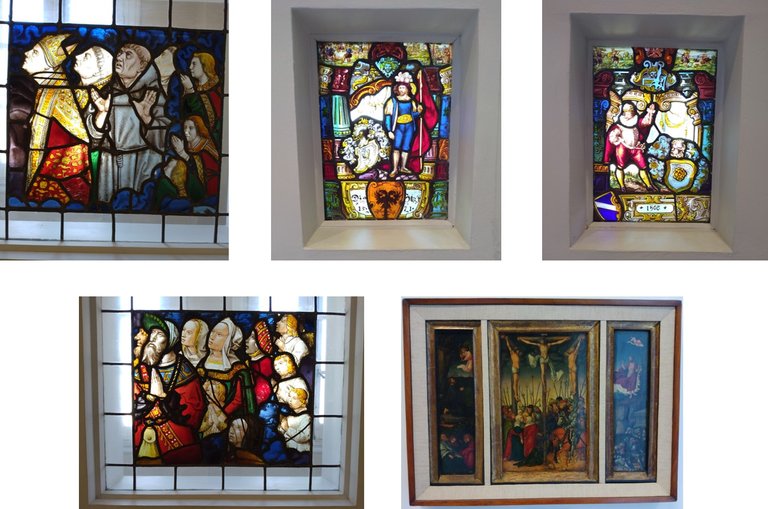
Examples of religious themes. The first two depict two versions of the Tower of Babel, while the other two paintings depict Adam and Eve in Paradise and the Holy Family with Saint Catherine and Saint Barbara.

Here are some examples that characterised the portrait theme.


Examples of still life and landscape.
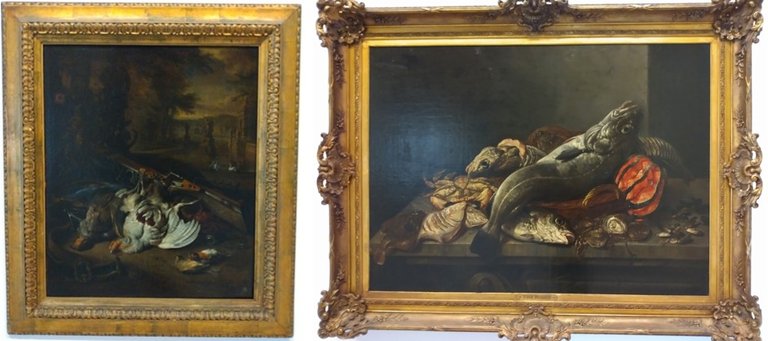
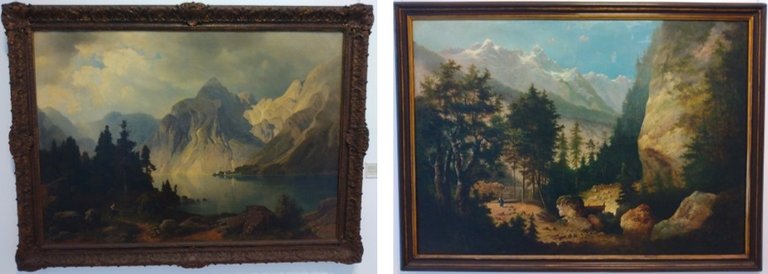
And with the room dedicated to Germanic art we conclude our tour of the spectacular Museo de Bellas Artes (Arte Universal) in Havana. I urge you, if you are visiting the capital, not to miss the opportunity to enjoy the art collections here. Thank you for your time and see you on the next adventure. Best regards.
All images are my property, taken with my MOTO G PLAY (2021) cell phone.
Translated with DeepL.
Versión en Español
Hola querida comunidad de viajeros. En esta ocasión les invito a realizar un recorrido virtual por un hermoso museo ubicado en La Habana, se trata del Museo Nacional de Bellas Artes en este caso el de arte universal, enclavado muy cerca del céntrico Parque Central, atesora una valiosa y rica colección de obras de destacados artístas plásticos foráneos. Espero les guste.
Este museo fue fundado en abril de 1913, se encuentra dividido en dos partes Arte Universal y Arte Cubano ubicadas en edificios distintos. El edificio de Arte Universal, es una construcción que data de los inicios de la República lo que en su momento fuera el Centro Asturiano y que fue inaugurando como museo en el año 2001; se caracteriza por su estilo ecléctico francés de cuatro pisos. La colección más importante es la del arte europeo representativas de las escuelas tradicionales europeas como España, Francia, Gran Bretaña, Holanda, Flandes e Italia. Además, de las exposiciones permanentes se presentan muestras temporales y frecuentemente, es escenario de otras actividades culturales. Las salas expositivas se encuentran equipadas con modernos sistemas de iluminación, climatización y seguridad integral.
Justo después de subir la primera escalinata que conduce a la segunda planta del museo son deslumbrados nuestros ojos con un colosal e impresionante vitral en el techo del edificio el cual, representa a las tres embarcaciones empleadas por el Almirante Cristóbal Colón en su viaje de descubrimiento.
Las exposiciones se encuentran distribuidas por pisos asi tenemos que en la primera planta se encuentran las colecciones de Arte Mexicano y de la Escuela Norteamericana, en la segunda planta el Arte Español, en la tercera el Arte antiguo (griego, egipcio, romano y sumerio) y en la última planta se encuentran obras representativas de la Escuela Alemana.
Vistas del interior del edificio que muestran los estilos arquitectónicos que caracterizan sus elementos estructurales.
Escalinata que conduce a la segunda planta.
Vista hacia la entrada del museo desde la escalera principal
Segunda planta
Las exposiciones se distribuyen por plantas: en la segunda se encuentran las colecciones de Arte Mexicano y de la Escuela Norteamericana; en la segunda, Arte Español; en la tercera, Arte Griego, Egipcio, Romano y Sumerio; y en la última, obras representativas de la Escuela Alemana.
Sala de Arte Mexicano
La mayor parte de las obras pertenecen a los siglos XVII y XIX no tienen autores mientras que otras son de reconocidos autores de fama internacional en la pintura novohispana de los siglos XVIII y XX. Se encuentran reflejadas diferentes géneros artísticos como: religioso, retrato, cristología, hagiografía, etc.
He aquí nos encontramos el tema del retrato donde podemos apreciar el retrato de Magallanes y Francisca Xaviera de Paula, ambas obras de artistas de la Escuela Novohispana del siglo XVIII.
También podemos ver una exposición de las pinturas de uno de los grandes exponentes del arte mexicano, el artista José Clemente Orozco.
Arte Norteamericano
Esta sala se ubica en frente de la anteriormente descrita y constituye una colección única en Cuba ya que conserva un número significativo de la plástica norteamericana de los siglos XVIII y XIX. Podemos encontrar estilos como la paisajística, retrato, marina, costumbrismo, etc.
En cuanto entré a esta sala me llamó la atención este cuadro de las Cataratas del Niágara en 1858, del pintor Regis Francois Gignoux. Es impresionante como este artísta logró captar ese momento que da la idea que estas observando las cataratas en pleno movimiento a través de un portal.
Debo confesar que no soy experto en arte, pero tengo facilidades para el dibujo y la pintura; y especialmente me encanta la paisajística y la marina. He aquí, les presento algunas obras donde se refleja la marina: el primero, titulado Marina, creado por la escuela estadounidense del sigo XIX y el segundo titulado Marea Baja del artista Alfred Thomson Bricher. En el primero, se plasma la serenidad que puede ofrecer el mar mientras en el segundo se refleja una expresión diametralmente opuesta.
Ejemplos de retratos, pinturas de género y religiosas. Aquí se muestra un retrato de George Washington.
Arte español
Desde fines del siglo XIX muchos artistas plásticos españoles se interesaron por visitar Cuba con el afán de exponer sus obras. Consiguientemente, el coleccionismo cubano siempre fue perceptivo a la pintura española. Como expresión de ello el museo atesora una valiosa exposición de obras españolas destacándose la colección de Joaquín Sorolla uno de los grandes exponentes del arte español de estilo impresionista. Destacándose por la temática de la Marina y Costumbrismo. En lo personal, me gusta mucho el estilo pictórico de Sorolla por la forma en que él ha supo afrontar las temáticas mediante el uso de pinceladas sueltas y el dominio del color.
Colección de obras de Joaquín Sorolla
En otra sección de la sala podemos disfrutar de las obras de otros pintores españoles como Hermenegildo Anglada, José Moreno Carbonero, Raimundo De Madrazo y otros.
Sala de Arte Antiguo
Se encuentra ubicada en la tercera planta del museo y atesora objetos manufacturados por las antiguas civilizaciones sumeria, egipcia, griega y romana. Lamentablemente, el día que fuí la sala se encontraba en restauración, pero al menos pude acceder a una parte de la colección que representa a la cultura sumeria y egipcia, donde encontramos ánforas, tablillas de escritura cuneiforme y estatuillas manufacturadas en bronce, caliza, mármol y otros tipos de piedras.
He aquí tenemos vasijas confeccionadas en arcilla y pertenecientes a la cultura Tell-El-Obeid que data del 3400 a.n.e., tablillas cuneiformes elaboradas en barro y pertenecientes al período sumerio en las Dinastías I y III de Ur. Por allá por los años 2000 a.n.e, así como figuras y esculturas de bronce, mármol, piedra caliza, etc. que representan deidades egipcias, sacerdotes y otros elementos de culto.
Imagen de la sala de arte grecorromano y egipcio, actualmente en restauración.
Sala de Arte Alemán
En esta sala se exponen las principales obras realizadas por artistas germánicos donde podemos apreciar hermosos cuadros con temáticas variadas como religioso, retrato y naturaleza muerta asi como una impresionante colección de vitrales con vistosos colores que juegan con la luz. Me llamó mucho la atención dos cuadros que reflejan el suceso de la construcción de la Torre De Babel mencionada en los textos bíblicos antiguos.
Colección de vitrales
Ejemplos de temas religiosos. Los dos primeros representan dos versiones de la Torre de Babel, mientras que los otros dos cuadros representan a Adán y Eva en el Paraíso y a la Sagrada Familia con Santa Catalina y Santa Bárbara.
He aquí algunos ejemplos que caracterizaron la temática del retrato.
Ejemplos de naturaleza muerta y la paisajística.
Y con la sala dedicada al arte germánico concluimos nuestro recorrido por el espectacular Museo de Bellas Artes (Arte Universal) de La Habana. Les animo a que, si visitan la capital, no pierdan la oportunidad de disfrutar de sus colecciones de arte. Gracias por su tiempo y hasta la próxima aventura. Saludos cordiales.
Todas las imágenes son de mi propiedad, tomadas con mi teléfono móvil MOTO G PLAY (2021).
Traducido con DeepL.
Hiya, @lizanomadsoul here, just swinging by to let you know that this post made it into our Honorable Mentions in Travel Digest #2182.
Your post has been manually curated by the @pinmapple team. If you like what we're doing, please drop by to check out all the rest of today's great posts and consider supporting other authors like yourself and us so we can keep the project going!
Become part of our travel community:
Hola @lizanomadsoul. Muchas gracias por su apoyo y tener en cuenta mi trabajo. Saludos cordiales.
eres un crack con las fotos me encantan, tremendo petrografo fotógrafo
Jjjj que cómica tu eres!!. Gracias por comentar. Un saludo. Bsss
De verdad que me ha encantado,tal parece que estuviese allí mismo haciendo el recorrido.
Cuanta riqueza y belleza en nuestro país, desconocía el lugar pero ya es visita obligada para mi.Gracias por tan lindo post.
Sí pudiera decirme cómo puso las fotos unas al lado de la otra,lo he intentado mil veces y no se me da...🙏..
Hola adaluna1973, es un privilegio saber que por medio de mi post usted ha podido conocer de este bello museo. Gracias por su comentario. Saludos cordiales.
Thanks for your support
Wow, this is a lovely kind of report to watch my friend @reneyasmany... I love appreciating works of art (whether classic like this one or modern) it always takes some effort to record these kind of photos... Good job!...
!discovery 35
!VSC
Hello friend. I'm grateful for your comment. Yes, it's amazing all the works exposed there. You should visit this museum in The Havana. Best regards
Thanks my friend for your support and comment. I will keep uploading contents. Best regards.
Thanks for your support Visual Shot. Best regards.
Thanks for your curation @qurator. I will keep posting content in this community.
This post was shared and voted inside the discord by the curators team of discovery-it
Join our Community and follow our Curation Trail
Discovery-it is also a Witness, vote for us here
Delegate to us for passive income. Check our 80% fee-back Program
Congratulations, your post has been added to Pinmapple! 🎉🥳🍍
Did you know you have your own profile map?
And every post has their own map too!
Want to have your post on the map too?